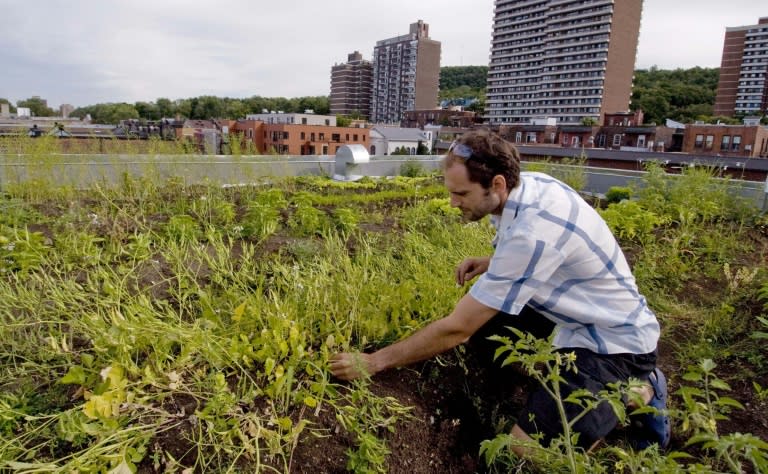As nations dither, cities pick up climate slack
Their national governments hamstrung by domestic politics, stretched budgets and diplomatic inertia, many cities and provinces have taken a leading role -- driven by necessity -- in efforts to arrest galloping global warming. It is at the sub-national level that extreme weather, which scientists say is to become more severe as the planet warms, will be most directly felt in terms of lives and infrastructure lost, emergency response and reconstruction costs. And while they are not officially a part of the UN process to negotiate a new, global climate pact, mayors and governors may be best-placed to do something much more immediate about the threat hovering over the communities to whom they are directly accountable. "The truth is, a lot of the heavy lifting in climate change in terms of action is... in the states and cities," Jay Weatherill, the premier of South Australia state, told AFP on Thursday. He was attending a two-day conference entitled "Climate and Territories" in the French city of Lyon, which gathered representatives of the world's cities and provinces, NGOs, company bosses, workers, labour unions, scientists and social groups. Cities and states, said Weatherill, often have control over energy utilities, transport, waste and land use systems a well as urban planning -- all of which can either be massive contributors to Earth-warming greenhouse gas emissions, or not. Many of the regulatory tools for addressing the problem are devolved to a sub-national level, he said, "and states and cities purchase goods and services which can be drivers for innovation." - California's commitment - So while the national government of Australia, one of the world's top per-capita carbon polluters, is accused of not acting fast enough to curb emissions, South Australia has an ambitious target of 50 percent renewable energy by 2025, having already surpassed its own 2020 target to reach 40 percent, mainly from solar and wind installations. "The earlier you respond to climate change, the costs of adjustment are fewer and the economic opportunities are actually significant," said Weatherill. For its part, California, the world's seventh-biggest economy, aims to reduce emissions by 40 percent from 1990 levels by 2030, and 80 percent by 2050. The state wants to have a 50-percent renewable energy ratio by 2030, to double the energy efficiency of buildings, and to halve petrol use -- partly by reducing reliance on carbon-spewing cars in favour of public transport, bikes and zero-emissions vehicles. "Climate is a big part of what makes California what it is," said the state's environmental protection secretary Matthew Rodriquez. "It's important to our agriculture, to our tourism and recreational economy, and climate is a big reason why so many people want to live in California. That's why we're doing what we can to deal with climate change issues." National governments have been negotiating for years to replace the carbon-curbing 1997 Kyoto Protocol, which was meant to be succeeded by a new treaty at a 2009 Copenhagen conference that ended in failure. In 2011, UN members agreed to conclude a deal by the end of this year which would enter into effect in 2020 and seek to limit global warming to two degrees Celsius (3.6 degrees Fahrenheit). But progress has been painfully slow, and one of the main stumbling blocks remains unresolved: how to share out responsibility for cutting emissions which scientists warn are placing the world in danger of ever more extreme droughts, floods, storms and sea-level rise. - Inactivity and inertia - As negotiators clashed in the UN talks, Canada withdrew in 2011 from the Kyoto Protocol -- a forerunner to the new, global climate pact that must be signed by a December deadline. But this has not stopped action on the ground, said environment minister David Heurtel of Quebec. The province established a carbon-trading market in 2013 in a bid to reduce greenhouse gases by 20 percent by 2020. "In spite of the inactivity or inertia of federal (governments), provinces are taking concrete action," he said. For its part, the US government formally pledged in March to reduce greenhouse gas emissions by 26-28 percent over 2005 levels within a decade, though Republicans immediately warned the target could be reversed by Congress. "It would be nice if we had more support at the federal level," said Rodriquez. "The president is doing what he can given the (Republican-majority) Congress that he has. "But what's important is that in California we decided we can't really wait for the federal government... we need to take the initiative."

 Yahoo Finance
Yahoo Finance 


